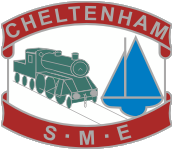So, you've bought an
injector and you want to give it the best chance of performing properly.
There are several things
to bear in mind:
- Fit an efficient water filter. Injectors
are xenophobic - they don't like foreign bodies. The filter should be large
enough in volume to pass sufficient water and also be of fine mesh to keep
out the nasty bits. M.E. suppliers sell the right sort. Incidently, it's a
good idea to fit a reasonable filter in the tank filler to keep the bits out
in the first place.
- Make absolutely certain that the
water valve cannot admit air. Indeed, any entry of air into the water feed
will be evidenced by spluttering from the over-flow pipe. Injector's don't
like it up 'em!
- Take the steam from the hottest point
in the boiler (same for ejectors) and be sure that the steam valve has the
largest practical passageways.
- Use the largest bore tube consistent
with appearance and practicality of actual fitting to the injector. Some model
shops sell 12" lengths of 5/32" OD thin wall copper tube. Ideal
for 5" gauge clients.
- Most of the experts recommend that
the pipe runs should be as direct as possible and with easy bends.
- Be sure that the clacks (I suggest
two) do not leak steam. Any leak will heat the injector. Injectors like cool,
man.
- If the injector still refuses to
do its stuff then the fault almost certainly lies within the gadget itself.
So, you've just steamed your locomotive
after its winter hibernation and the injector that did work, doesn't.
If it puts all its water on the ground,
it could be that the clack valve balls are stuck on their seats, and if it splutters
there might be an air leak in the water feed or perhaps some crud has got between
the steam and combining cones.
In any case it's not a bad idea to
carefully take it apart and thoroughly clean it in Citric Acid. A small length
of wooden dowel rod may be turned to a point to clean the cones.
Check the ball and seating in the
injector. Examine the steam cone. The business end is very thin anyway and after
a time can begin to break up. My old 'Lion' injector has had two replacement
cones due to this.
If the injector will only feed at
a lower pressure than it did, then it is possible that the steam cone has become
enlarged. The general rule is that a larger bore steam cone will work at a lower
pressure and vice versa.
Is the injector overheating due to
leaking clacks or steam valve? Injectors do not like it hot - in full size it
is not unknown for a bucket of cooling water to be thrown over it.
I would never claim to be an authority
on the ills and mysteries of injectors but these few notes are based on practical
experience and I hope that you may find them useful.

|









